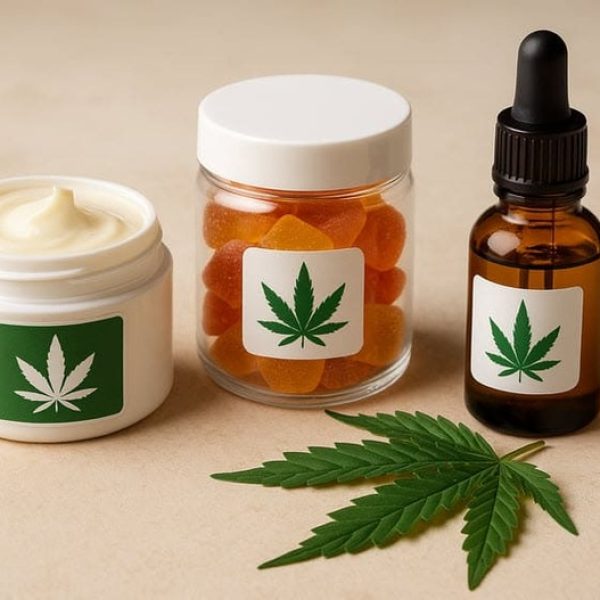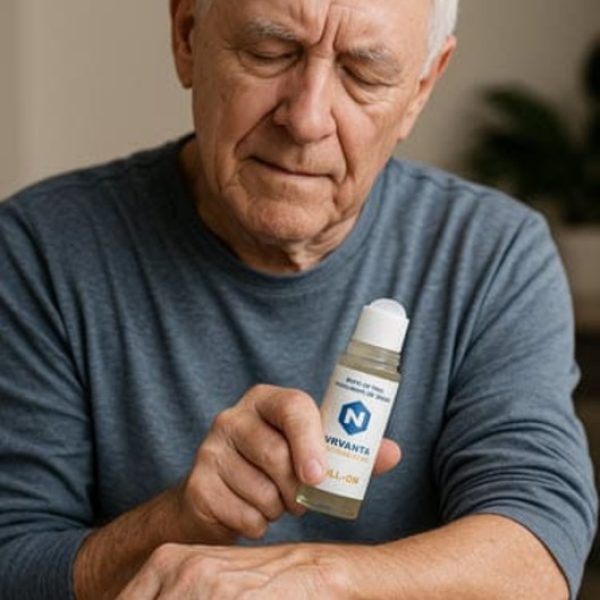As public attitudes toward cannabis continue to evolve, older adults are increasingly turning to medical cannabis to manage chronic conditions and improve quality of life. Once stigmatized and criminalized, cannabis is now being studied more seriously for its therapeutic potential, especially in managing symptoms like chronic pain, anxiety, sleep disturbances, and inflammation.
To help demystify the topic, we spoke with Andrew Eckert, an educator and advocate in the field of medical cannabis. Andrew earned his Master of Science in Medical Cannabis Science and Therapeutics from the University of Maryland’s School of Pharmacy, a pioneering program that bridges the gap between science, policy, and patient-centered care.
This article answers common questions older adults may have about cannabis, and breaks down the differences between THC and CBD, with the goal of helping people make informed, confident choices in partnership with their healthcare provider.
- THC vs. CBD: What’s the Difference, and What Are the Risks in Older Adults?
Cannabis contains over 100 active compounds known as phytocannabinoids, but two dominate therapeutic interest: THC (tetrahydrocannabinol) and CBD (cannabidiol). THC is psychoactive, it causes the “high”, while CBD is non-intoxicating and may even counteract some of THC’s effects. Both interact with the human body’s endocannabinoid system (ECS), which regulates processes like pain, mood, appetite, and sleep.

For older adults, CBD is often preferred for conditions like anxiety, arthritis, or sleep disturbances because it has fewer psychoactive effects and a lower side effect profile. However, in some cases, low-dose THC has been found helpful for pain and insomnia, especially when combined with CBD.
Potential Risks and Drug Interactions
Older adults may be more sensitive to cannabis due to age-related changes in metabolism and increased vulnerability to side effects like dizziness, confusion, or sedation, which can increase fall risk. Cannabis may interact with medications such as:
- Blood thinners
- Sedatives or benzodiazepines
- Antidepressants
- Anticonvulsants
Consulting a healthcare provider before use is essential, especially for those managing multiple conditions.
- Which Cannabis Products Are Best for Managing Pain in Older Adults?
Cannabis can be used in many forms, but for arthritis, back pain, or neuropathy, topical products are a gentle and effective starting point. Lotions, salves, and creams allow cannabinoids to interact with local ECS receptors in the skin without entering the bloodstream—providing pain relief without psychoactive effects.
Topicals are especially well-suited for:
- Arthritis in the hands, knees, or joints
- Neuropathy in the feet or extremities
- Muscular back or neck pain
Beyond topicals, sublingual tinctures (absorbed under the tongue) and capsules or edibles offer longer-lasting relief for systemic pain, though their onset is slower. Tinctures are ideal for users who want precise dosing and a moderate onset, while edibles are best for those who don’t mind waiting for effects.

3. How to Choose a High-Quality, Trustworthy Product
The explosion of cannabis products on the market has created both confusion and concern among patients. Fortunately, there are several ways to identify reliable products:
Look for third-party lab testing — Known as a certificate of analysis (COA), this document should list cannabinoid content, and terpene profile, and check for contaminants like mold, pesticides, and heavy metals.
Check product labels for dosage transparency — Reputable products clearly state how much THC or CBD is in each dose (e.g., “5 mg CBD per gummy”).
Beware of unregulated hemp-derived THC variants (like delta-8 or delta-10), which are often poorly tested and lack long-term safety data.
Buy from licensed dispensaries or medical programs when possible. These are subject to higher standards than gas stations or online retailers.
If you’re ever unsure, bring the label or product to your healthcare provider for review.
- First-Time Cannabis Use: Go Slow, Stay Safe, and Talk to Your Doctor
If you’re new to cannabis, the golden rule is: start low and go slow. For THC, that means starting with no more than 2.5 mg. For CBD, 5 to 10 mg is a common starting range. After taking it, be patient—it can take one to two hours (or longer with edibles) before you feel anything. Don’t take more too soon.
It helps to keep a small notebook or use your phone to jot down what you took, how much, and how it made you feel. This makes it easier to find what works for you.
Most important of all: talk to your doctor. They can help you figure out if cannabis is a good fit for you and how to use it safely with any other medications you’re taking.
Cannabis is becoming more accepted, and older adults are among the fastest-growing groups exploring it. Whether you’re using it for pain, sleep, or anxiety, it’s a flexible option that may even help you cut back on some traditional medications. Just be sure to go at your own pace, use products from trusted sources, and keep communication open with your healthcare team.
About the Author

Andrew Eckert is a graduate of the Master of Science in Medical Cannabis Science and Therapeutics program at the University of Maryland, Baltimore School of Pharmacy. He is not a medical professional. This article is for informational purposes only and should not be taken as medical advice.
Please consult a qualified healthcare provider before beginning any cannabis-based treatment or making changes to your current care plan.
Kaskie, B., et al. (2017). The Increasing Use of Cannabis Among Older Americans. The Gerontologist. https://doi.org/10.1093/geront/gnw166
Gregorio, J. (2014). Physicians, Medical Marijuana, and the Law. AMA Journal of Ethics. https://doi.org/10.1001/virtualmentor.2014.16.9.hlaw1-1409
Conant v. Walters | LexisNexis Case Brief. https://www.lexisnexis.com/community/casebrief/p/casebrief-conant-v-walters




